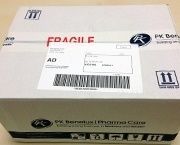How to tackle infringement? This how you gather evidence (7/9) | EP&C

If you suspect that someone is infringing your patent, it is up to you to prove it. It is important to note, however, that you need take great care when trying to do so, as you could end up doing more harm than good.
Before you get started I recommend that you get in touch with your patent attorney. He will take you through the steps to be taken, as you have to be able to demonstrate a number of things when trying to prove an infringement:
- The products have to have the features described in the claims of your patent.
- The product is available or is being offered in a country in which your patent is valid.
- The product is available after the date on which your patent was granted.
- The product is actually being offered commercially.
If it is impossible to prove one of these points, it is going to be difficult to insist that someone is violating your Intellectual Property rights.
What do you have to pay attention to when gathering evidence?
1. Make sure you date the evidence
To start with you can print screenshots of the website on which the product is being offered. Make sure that the date is clearly visible or record the information you have found via a website such as WaybackMachine.
If you gather evidence at an exhibition, for example, you have to make sure that you not only take a picture of that one screw at the bottom left hand side, but also make it visibly clear which exhibition you are at. You can do this by means of an overview picture which includes the name of the exhibition, the programme booklet (including the date of the event), the stand in question, etc.
2. Keep the receipt
Make sure you get your hands on a number of products and then carefully keep the receipt. This is proof that the product was available in the Netherlands on that particular date.
3. Let sleeping dogs lie
If the product has to be ordered directly from your competitor, you can do so via an intermediary. This will not raise alarm bells at the potential infringer, which gives you time to gather more evidence and to investigate whether your Intellectual Property rights are actually being violated.
4. Legally tenable evidence
Once you have got your hands on the product you will want to know what it looks like inside. To ensure that the evidence is legally tenable I recommend that you have the product examined by an independent party. This could be a test institute or a chemical analysis lab. They will 'strip' the product bit by bit and will keep a visual record of each step. This ensures that you have carefully documented evidence of their findings.
What to do if one of the pieces of evidence is missing or is incomplete?
In that case it is unwise to accuse someone of an infringement. You can be held liable for costs incurred or lost profits, not to mention the effect this is likely to have on your reputation in the market.....
If the evidence is available but not legally valid, it is going to be more difficult to stop your competitor. So when gathering evidence it is also true to say that a good start is half the battle.

About the author
I studied chemistry in Utrecht and wrote my Ph.D. thesis on organic synthesis. Before joining EP&C as a patent attorney in 2004, I worked at KeyGene, a biotechnology company. I specialize in food and...
More about Robbert-Jan >